Anders Breivik case: How bad is solitary confinement?
- Published
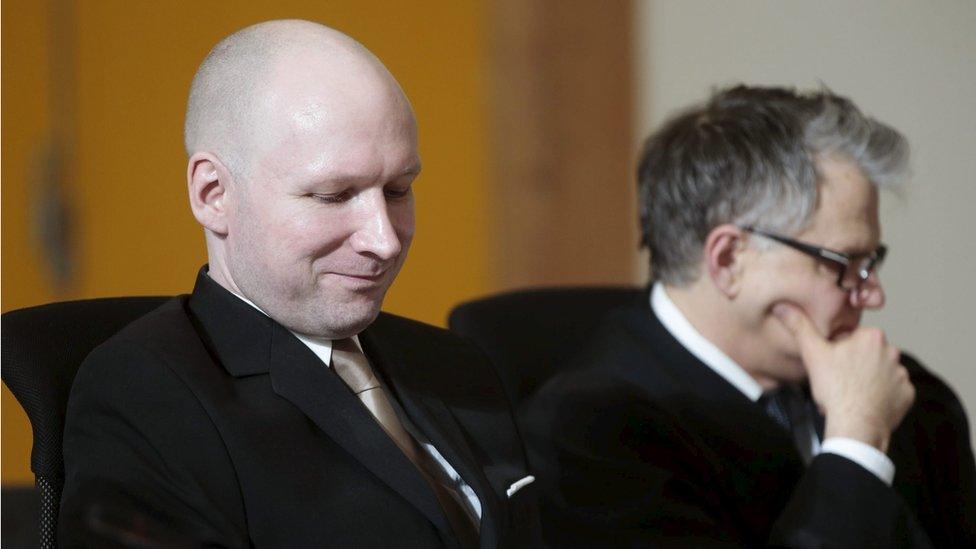
Breivik (left) sits next to his lawyer Oystein Storrvik in a court room in Skien prison
Jailed Norwegian mass murderer Anders Breivik has had his complaint about solitary confinement partially upheld by a court.
He argued that being kept in solitary confinement was worse than the death penalty, and that his conditions breached the European Convention on Human Rights.
The right-wing extremist, who killed 77 people in 2011, has been held on his own since his arrest shortly afterwards.
A court has upheld part of his claim by finding that he was subjected to inhumane or degrading punishment.

What is solitary confinement?
There is no universal definition, but in 2011, UN Special Rapporteur on Torture Juan Mendez said, external it was any regime where an inmate is held in isolation from others, except guards, for at least 22 hours a day.
Mr Mendez called for a total ban on indefinite and prolonged solitary confinement lasting more than 15 days.

What are the effects of isolation?
Craig Haney, a professor of psychology at the University of California, Santa Cruz, has studied the impact of solitary confinement on US prisoners over decades.
He says some people experience immediate terror from being placed in an environment where they cannot relate to other people, while others slip into long-term depression and hopelessness over time.
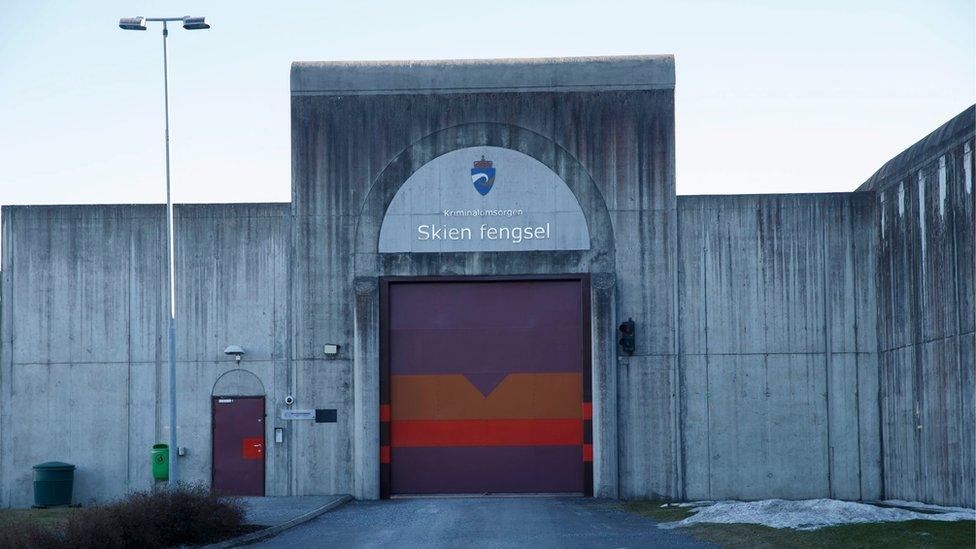
Breivik is being held in Skien prison
Starved of stimuli, their intellectual skills may decay and they may suffer memory lapses. Some "literally go insane," he says.
"That's an extreme case of somebody's identity becoming so badly damaged and essentially destroyed that it is impossible for them to reconstruct it," he told the BBC.
Mr Mendez has said solitary confinement can amount to torture or cruel, inhuman or degrading treatment or punishment.
How do people survive solitary confinement?
Scientists call solitary confinement 'damaging and unnecessary'

What are Breivik's conditions?
Security rules mean Breivik's interactions with prison guards and a priest take place through a thick glass barrier.
The only physical contact Breivik has had since his arrest was with his mother, who was allowed to see him without the glass wall. That was a brief visit to say goodbye just before she died, his lawyer Oystein Storrvik said.
Breivik has been kept alone in his cell for 22 to 23 hours a day and denied contact with other inmates.

A typical cell in Skien prison looks like this
Although Breivik has three prison cells, access to an electronic typewriter, newspapers, TV, exercise machines and videogames, and can cook and do laundry, Mr Storrvik argued that he is being damaged by his isolation.
The lawyer cited prison reports that said Breivik could appear disoriented and forgetful, not remembering what day or time it was.
He has been woken up at regular intervals overnight for a long period of time.
On some occasions he has been subjected to strip searches with female officers present.
Norwegian government lawyer Marius Emberland said Breivik had to be held in isolation because he was a dangerous man who could influence other prisoners.
This was also for Breivik's own safety, he said, citing one instance when another inmate was able to get to the door of Breivik's cell and threatened to kill him.

What are Breivik's rights under the European Convention on Human Rights?
Article three of the convention states that no one shall be subjected to torture or to inhuman or degrading treatment or punishment.
The verdict said the Norwegian state had broken article three. Making her ruling at the end of the case, judge Helen Andenaes Sekulic said that the prison regime Breivik lived under was so markedly different from the conditions enforced on any other prisoner in Norway, that it had to be considered an extra punishment.
She said he was kept in a "completely locked world with very little human contact", even though his behaviour in prison had been "exemplary".
She said the authorities had not given due consideration to Breivik's mental health when designing his prison regime.
In her ruling, she wrote: "The prohibition of inhuman and degrading treatment represents a fundamental value in a democratic society. This applies no matter what - also in the treatment of terrorists and killers."
Article eight states that everyone has the right to respect for his private and family life, his home and his correspondence. The court dismissed Breivik's claim that his private life and correspondence rights had been breached.
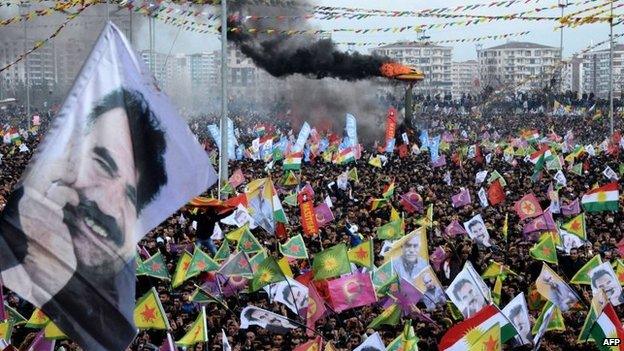
PKK leader Ocalan successfully complained about solitary confinement to the European Court
The European Court of Human Rights has considered several other appeals, external against solitary confinement.
In 2005, it rejected an appeal by Ilich Ramirez Sanchez - better known as the killer and revolutionary Carlos the Jackal - who had spent eight years in solitary confinement in France after being jailed for the murder of three French police officers in the 1970s.
In the ruling, external, it said Ramirez Sanchez had been subject to relative, not total, social isolation, and this did not reach the minimum level of severity necessary to constitute inhuman treatment.
The court said this was partly because he had had regular visits from his lawyer, who had become his wife, as well as from 57 other lawyers.
Carlos the Jackal faces new trial
In 2014, the court upheld a complaint by the jailed Kurdistan Workers' Party (PKK) founder Abdullah Ocalan, who had been held alone on an island without visitors or access to information. However, the Turkish government had transferred five other prisoners to the island by the time the judgement was made.

Who else is held in solitary confinement?
The US whistleblower Chelsea Manning spent eight months in solitary confinement, while detainees at the Guantanamo Bay have also been subjected to repeated detentions in solitary of 30 days, the UN said.
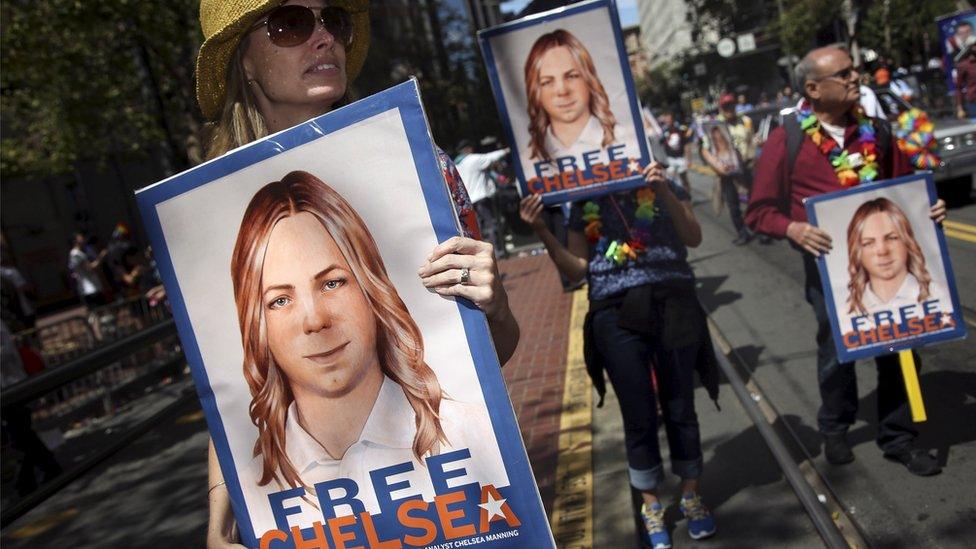
Chelsea Manning spent eight months in solitary, the UN said
Former South African leader Nelson Mandela also had stints locked up alone during his 27-year incarceration.
"I found solitary confinement the most forbidding aspect of prison life. There was no end and no beginning; there is only one's own mind, which can begin to play tricks," he wrote in his autobiography.
But relatively ordinary prisoners can also find themselves in solitary.
The organisation Solitary Watch, external estimates between 80,000 and 100,000 prisoners in the US are kept in some form of isolation.
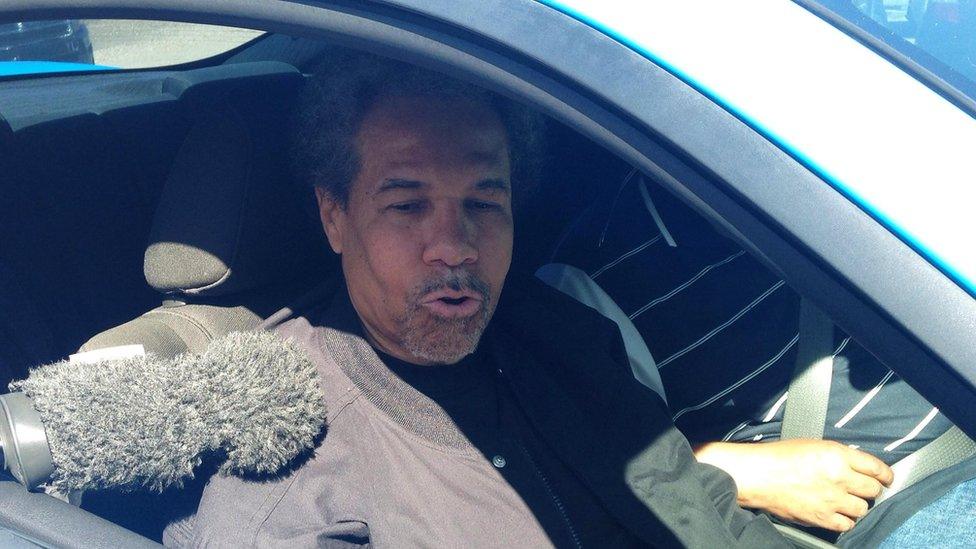
Albert Woodfox was released in February after more than 40 years in solitary confinement
Solitary Watch says isolating prisoners is seen as an easy way to maintain control over prisons.
It is often used to separate inmates who have been involved in fights with prison staff or with other prisoners.
Others may be put in solitary to separate them from other inmates because they are children, are gay or report abuse by prison guards, the organisation says.
The measure is also used frequently in countries including Kazakhstan and Argentina, the UN said.

What is the longest period spent in solitary confinement?
Albert Woodfox was held in solitary confinement for more than four decades in a Louisiana prison over the murder of a prison guard in 1972.
Mr Woodfox, who had always said he was innocent, was freed in February after accepting a lesser plea of manslaughter in order to resolve his case.